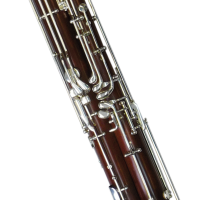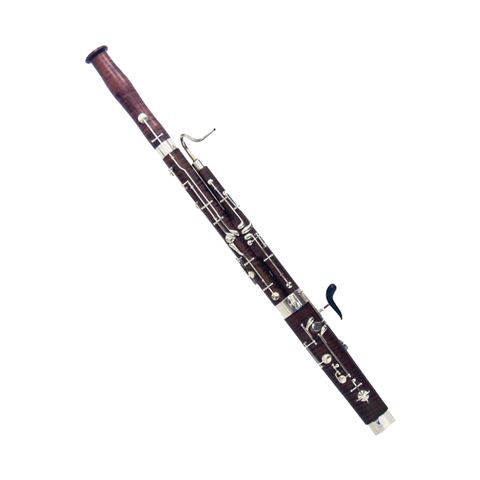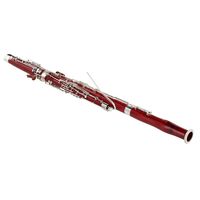
Guntram Wolf Basson S 2000 Plus 9493.00 € Guntram Wolf Bassoon S 2000 Plus, from long-seasoned sycamore maple from slowly growing layers, with the S 2000 plus models exclusively specially selected woods are used, these give the instrument. There’s actually a significant argument in favour of introducing children to the bassoon and the oboe. From my own experience – I played bassoon and oboe when I was at school – I know that a large part of the repertoire of all sizes of amateur orchestras is drawn from 18 th century composers. Fg 5 Plus Quint-Bassoon. Fg 4 Plus Quart Bassoon. Basson S 2000 Plus. Compare. The prices shown exclude VAT. Plus Shipping costs. Goods subject to custom declaration; customer fees to be paid on delivery if applicable. Offers are subject to.
One day, more than 25 years ago, I was standing in a museum with an 18th century fagottino in my hands. A young girl passed by and said to her mother ‘Mum, look at that! Isn’t it cute! Isn’t it pretty! I want to play one like that!’ I thought ‘What a great idea!’
I made the first modern fagottino for children that same year.
Bassoon players and teachers thought it was ridiculous, but I told them ‘Just you wait and see!’
Nowadays there’s no need to convince anyone any more. We turn out large numbers of fagottini and sell them throughout the world.
We used to make standard bassoons with their mechanisms adapted for children but, as I’ll explain, we moved away from that notion for a number of reasons.
Bassoon Made of long-seasoned sycamore maple from slowly growing layers, The wooden body is manufactured using various CNC machines for the highest possible pass and repeat accuracy, The wing and the first boot hole are completely filled and thus. Guntram Wolf Basson S 2000 Plus. Bassoon From long-seasoned sycamore maple from slow growing locations. The S 2000 plus models use only specially selected woods.
However, we had a few questions to answer before deciding to start making instruments especially for children.
The first thing to think about is whether children should really be starting to play the bassoon so young. We can learn something about this from biology, which tells us that whatever you learn in your formative years, before your tenth birthday, is imprinted in your brain and never forgotten. Before deciding to support music lessons at such a tender age by producing the instruments for the job, you need to investigate – without any preconceptions – whether this could in any way be harmful to a child’s physical health. This topic has been debated at length at a number of medical symposia. They debated all sorts of things that might be harmful to children, such as the pressure generated when blowing, dental development and so on. The result was that they could not find any insuperable problems. But on the other hand you have to reckon with the considerable weight of the standard bassoon. This weight imposes a burden on bone development among growing children, and can have serious consequences in later life. Also, it was felt that excessive spreading of the fingers and bad posture had to be avoided. One could deal with these potential downsides by building a small bassoon.
There’s actually a significant argument in favour of introducing children to the bassoon and the oboe.
From my own experience – I played bassoon and oboe when I was at school – I know that a large part of the repertoire of all sizes of amateur orchestras is drawn from 18th century composers. And this is exactly the type of music that consistently uses bassoons and oboes! These groups generally can’t afford to hire in professional guest players, which is why there’s such a great need for amateur bassoonists and oboists. So it’s really important that children should get a chance to learn and play the oboe and bassoon, even in primary school.
In the past, the biggest problem was that no suitable instruments were available for children of this age.
Now we can get back to the starting point for this article – to that little epiphany in the 1980s. Our first children’s bassoons found their way into schools and music schools and were very well received. Their growing success encouraged us to extend our range of children’s instruments with oboes and clarinets. As far as the bassoon is concerned, we eventually came up with three formats, in a range of configurations: model Fg 4, model Fg 5 and model Fg 8.
Children can play all three formats using normal bassoon reeds. The fingerings on the quart and quint bassoon are the same or for a normal bassoon. For our octave bassoon, in the simplest of configurations (model Fg 8), the fingerings are more like those of a historical bassoon.
Small bassoons were quite common in the 18th century. They served well as alto and tenor instruments, and nowadays they’re back in use in the same functions. They sound extraordinarily good as double-reed alto or tenor voices in ensemble music.
The attack and tuning on children’s instruments have to be as good as they can be, because children can’t cope with faults and weaknesses in instruments as well as a professional can. We offer all of our fagottini in a standard and a plus configuration. The difference is that the Plus models of the quart and quint bassoons have a complete whisper key mechanism, whereas the Standard models have a dummy whisper key that serves no function apart from getting the children accustomed to using it. We don’t tend to recommend the full whisper key mechanism for children, because they often bend the whisper key itself on the bocal while assembling or taking the instrument apart. And, since the fagottino is played with a comparably large reed (a normal bassoon reed), attacking the lower notes is not a problem at all. Professionals often make smaller reeds, so the whisper key mechanism comes into its own for them. And it’s not a problem to retrofit the whisper key mechanism at a later date, or indeed to make all sorts of other changes to the keywork.
S2000
We also manufacture a fully developed version of the quart bassoon (model Fg 4 P plus) for professionals, with extra keys as well as a full whisper key mechanism. Our idea of designing (double) reed instruments for children has proved to be a great success. We expect to introduce further improvements to children’s instruments in the future. They will also be designed and made in such a way that they meet all medical, pedagogical and – last but by no means least – ethical requirements.
Contact: FagotAtelier Maarten Vonk
Guntram Wolf Holzblasinstrumente GmbH
Im Ziegelwinkel 13
96317 Kronach
Deutschland
Tel.: +49 9261 506 790
Fax: +49 9261 527 82
email: info@guntramwolf.de
http://www.guntramwolf.de/index.html
belt | chiba | basson | wolf | guntram |

Prix: 20 €
Description: Une Dipping Belt (ceinture pour dips) professionnelle fait de tissu de la plus haute qualité de Chiba.
Expédition: 4.9 €
Livraison: Voir le site
Statut: 1

Prix: 9229 €
Description: Guntram Wolf Basson S 2000 Plus, Bassoon, From long-seasoned sycamore maple from slow growing locations, The S 2000 plus models use only specially selected woods, which give the instrument its individual sound characteristics., The vibration behaviour was additionally improved by a special dipping treatment
Expédition: Gratuit
Livraison: Voir le site
Statut: liefertermin unbekannt
Guntram Wolf Bassoon S 2000 Plus For Sale


Guntram Wolf Bassoon S 2000 Plus Manual
Copyright 2015 iPrix.fr - La recherche de prix Contact